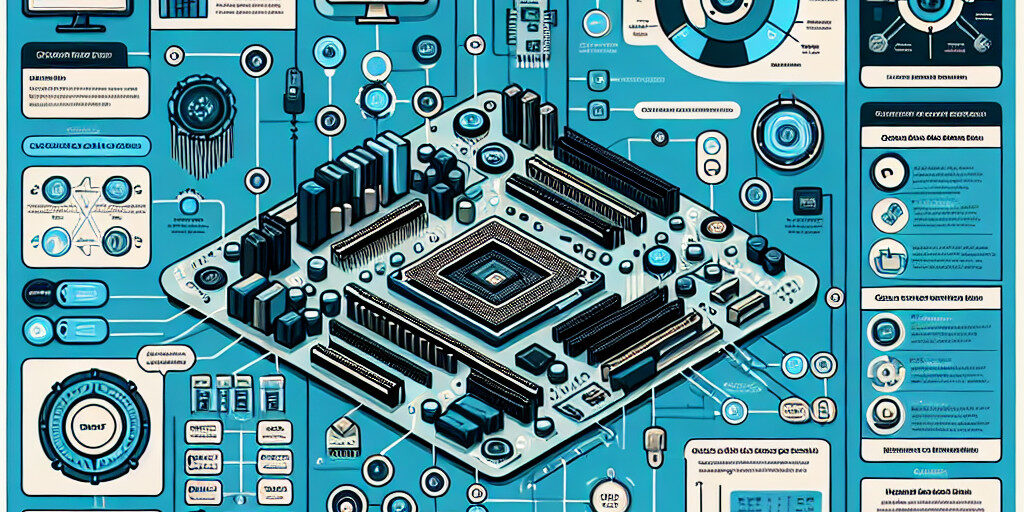BIOS settings might seem like a tech-savvy domain reserved for advanced users, but understanding them is crucial for anyone looking to optimise their system’s performance. Whether you want faster boot times, improved hardware compatibility, or better system stability, tweaking BIOS settings can make all the difference.
In this guide, we’ll explore what BIOS settings are, how they impact your system, and how you can make adjustments safely. By the end, you’ll have a solid understanding of this essential aspect of computer configuration.
What Are BIOS Settings?
The Basic Input/Output System (BIOS) is a firmware interface that sits between your operating system and your computer’s hardware. BIOS settings determine how your system boots up and communicates with hardware components like the CPU, RAM, and storage devices.
- Primary Purpose: To initialise and configure hardware components.
- Modern Alternative: Many systems now use UEFI (Unified Extensible Firmware Interface) instead of traditional BIOS.
Key Functions of BIOS Settings
1. Initialising Hardware
When you turn on your computer, the BIOS ensures all hardware components are functional and ready for use.
- Performs a Power-On Self-Test (POST).
- Checks for connected peripherals and devices.
2. Managing Boot Sequences
BIOS determines the order in which devices are checked for bootable operating systems.
- Prioritise SSDs for faster boot times.
- Adjust boot order when installing a new OS.
3. System Performance Tweaks
BIOS settings allow users to overclock components, optimise RAM performance, and enable advanced features like virtualisation.
Navigating BIOS: An Overview
1. Accessing the BIOS Menu
Accessing the BIOS menu varies by manufacturer but usually involves pressing a key during startup, such as:
- Del or F2 for most systems.
- Esc or specific keys for branded PCs like HP or Lenovo.
2. Understanding the BIOS Interface
The BIOS menu is often text-based and divided into sections such as:
- Main: Displays system information.
- Advanced: Houses performance and hardware configuration settings.
- Boot: Allows you to configure the boot order.
Important BIOS Settings Explained
1. Boot Order Settings
The boot sequence determines which device the system accesses first.
- Set the boot priority for operating system installation or troubleshooting.
- Disable unnecessary devices to speed up the process.
2. Overclocking Options
Overclocking boosts CPU or GPU performance but increases heat and power consumption.
- Adjust multiplier and voltage cautiously.
- Monitor temperatures to prevent overheating.
3. Virtualisation Support
Enabling virtualisation (VT-x or AMD-V) allows the system to run virtual machines.
- Necessary for software like VMware or Hyper-V.
- Found in the advanced settings section.
4. Power Management Features
Power-saving features, like Intel SpeedStep or AMD Cool’n’Quiet, dynamically adjust CPU performance.
- Useful for laptops to extend battery life.
- May impact performance if not configured correctly.
UEFI vs BIOS: What’s the Difference?
1. UEFI Features
- Supports drives larger than 2TB.
- Offers a graphical interface and mouse support.
- Faster boot times compared to traditional BIOS.
2. BIOS Limitations
- Limited support for modern hardware.
- Lacks advanced security features like Secure Boot.
Common Mistakes in BIOS Configuration
- Incorrect Boot Order: Leads to boot failures if the wrong device is prioritised.
- Over-aggressive Overclocking: Can cause system instability or hardware damage.
- Disabling Critical Features: Disabling USB or SATA ports unintentionally.
Tips for Safe and Effective BIOS Adjustments
- Backup Settings: Many BIOS interfaces offer a “Save Profile” option.
- Document Changes: Note down original settings before making adjustments.
- Update BIOS Cautiously: Only update BIOS firmware if necessary and from official sources.
Conclusion and Call to Action
Understanding and optimising BIOS settings can significantly enhance your system’s performance, boot speed, and overall stability. By familiarising yourself with key settings and avoiding common pitfalls, you can unlock your computer’s full potential.
At Perth Computer Experts, we specialise in system optimisation and BIOS configuration. If you’re unsure about adjusting your BIOS settings or need professional assistance, don’t hesitate to contact us. Let our experts help you optimise your system for peak performance today!




